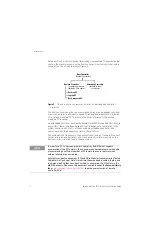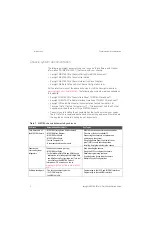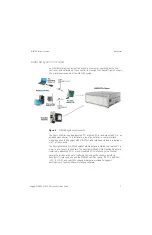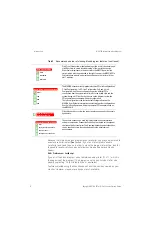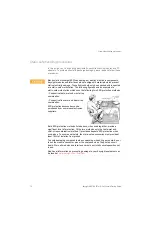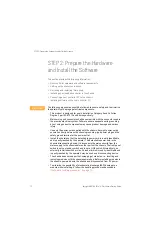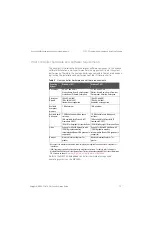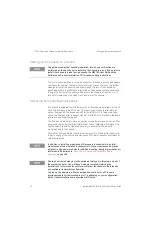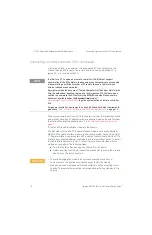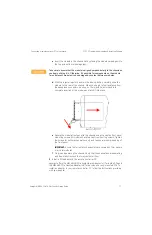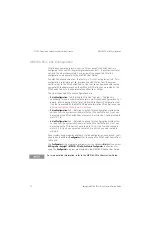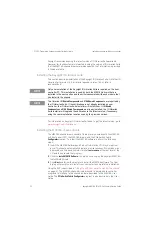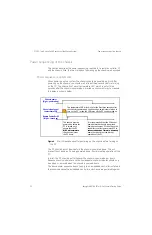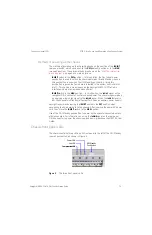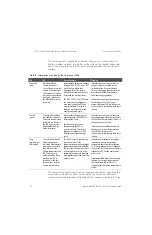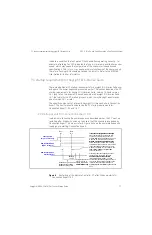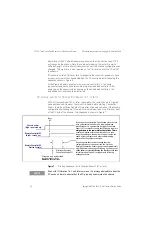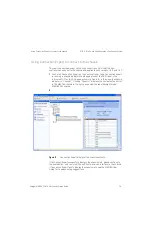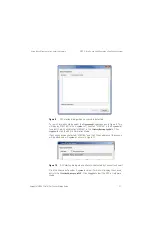
1
6
Keysight M9018A PXIe 18-Slot Chassis Startup Guide
STEP 2: Prepare the Hardware and Install the Software
Connecting a remote controller PC to the chassis
Connecting a remote controller PC to the chassis
A remote controller is an external, Windows-based PC that connects to the
chassis through a PCIe cable. The remote controller can be a desktop PC, a
laptop PC, or a rack-mounted PC.
To connect a remote controller PC to the chassis, perform the three steps listed
below. When handling PC adapter cards and chassis modules, be sure to follow
the static-safe procedures described in
“Static-safe handling procedures” on
.
1
Install a PCIe cable interface module in the chassis
The first step is to install a PCIe cable interface module, such as the Keysight
M9021A PCIe Cable Interface module, in the chassis system controller slot (slot
1). Cable interface modules contain a PCIe cable connector that permits a PCIe
cable to be connected between the module and the remote controller. To install
the cable interface module in slot 1, follow the instructions provided with the
module as you perform the following steps:
a
Turn the chassis off and unplug the chassis from AC power.
b
Before inserting the module, inspect the chassis slot to ensure there are no
bent pins on the slot connectors.
In order for a PC to serve as a remote controller, its BIOS must support
enumeration of the PCIe slots in the chassis; many computers are not capable
of enumerating a sufficient number of PCIe slots to ensure that slots in an
external chassis are enumerated.
Keysight provides the document “Tested Computer List Technical Note” which
lists the embedded, desktop, laptop, and rack-mounted PCs that have been
verified to enumerate the PCIe slots in the M9018A chassis. Please use this
document, available under the
Document Library
tab at”
www.keysight.com/find/M9018A
, to guide your selection of remote controller
PCs.
For general controller requirements, such as RAM and hard disk requirements,
please see
“Host controller hardware and software requirements”
-
To avoid damaging the module, do not touch exposed connectors or
components on the printed circuit board as you install the module.
-
Modules are usually shipped with thread protectors on the mounting screw
threads. These protectors must be removed before installing modules in the
chassis.

